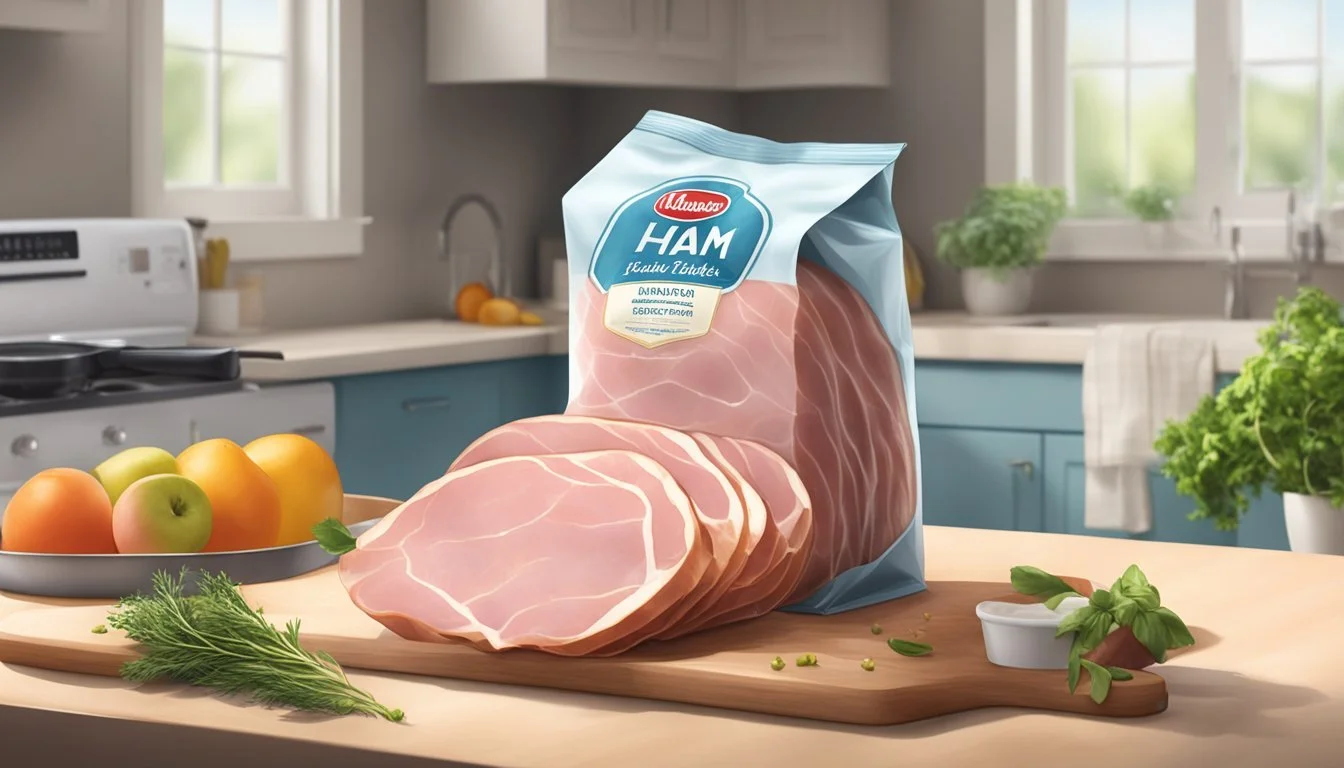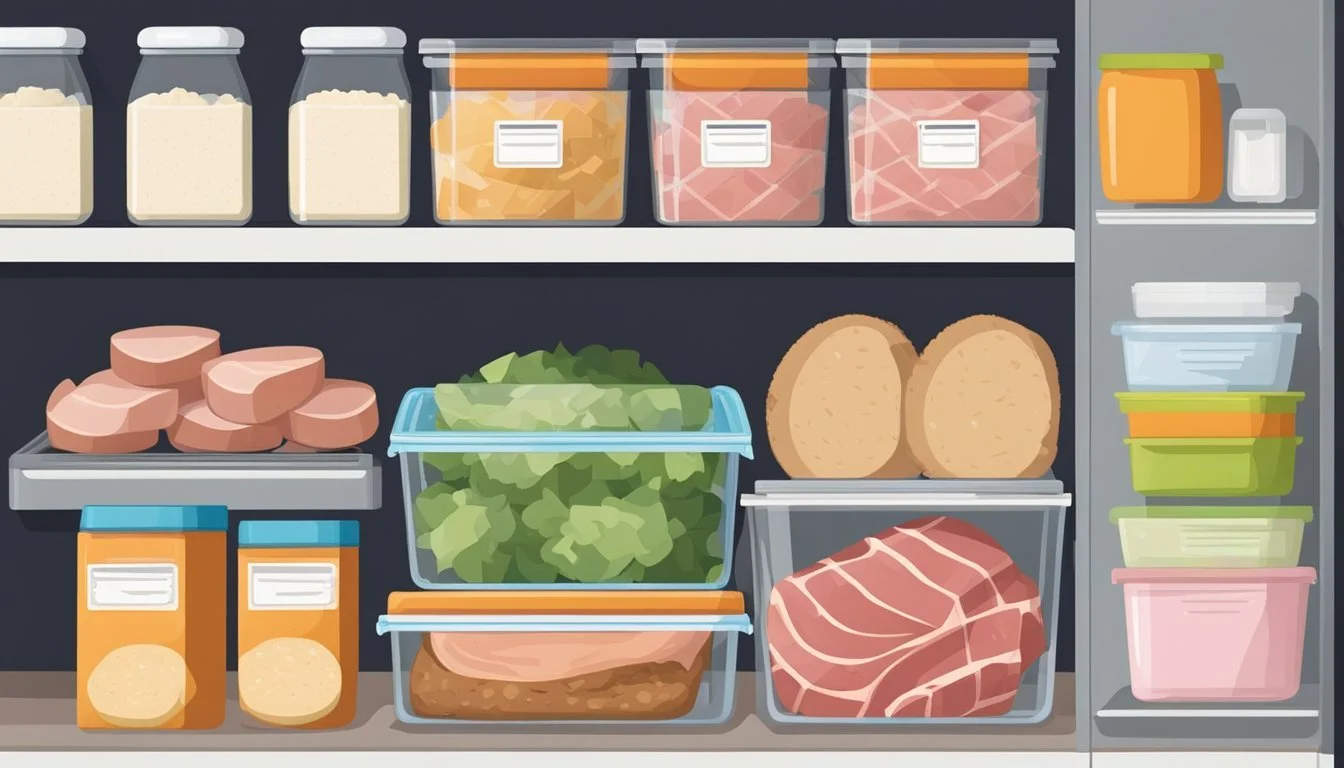Does Ham Go Bad?
Understanding Shelf Life and Spoilage Signs
Ham, a popular protein choice, is enjoyed in various forms, from holiday glazed hams to daily sandwich meat. However, despite its prevalence, consumers often wonder about the shelf life of ham and how to tell when it's no longer safe to eat. The longevity of ham is influenced by several factors, including the way it is processed, packaged, and stored.
Different types of ham - including fresh, cured, and pre-cooked - each have unique storage guidelines and shelf lives. Fresh ham, akin to a raw pork roast, requires cooking before consumption, whereas cured hams like prosciutto are preserved and typically eaten raw. Pre-cooked hams, readily found in grocery stores, can be consumed as-is or heated for enhanced flavor.
Recognizing a spoiled ham is crucial for food safety. Indicators of spoilage involve changes in color, texture, and smell. A sour or "off" odor, an unusual color change, or a slimy texture on the surface are all signs that ham may have gone bad. Proper storage of ham, such as keeping it well-wrapped in the refrigerator or freezer, is essential to prolong its shelf life and maintain its quality.
Understanding Ham and Its Varieties
When discussing the perishability of ham, it's crucial to distinguish between its various types and forms, as these factors can significantly influence its shelf life.
Whole Ham vs. Sliced Ham
Whole Ham: Often has a longer shelf life due to its larger size and the fact that it remains uncut, reducing the surface area exposed to bacteria. A typical whole ham can last about 2 weeks unopened in the refrigerator.
Sliced Ham: As soon as ham is sliced, its shelf life diminishes. Sliced ham from a deli counter should be consumed within 3-5 days once opened, mainly due to greater exposure to air and bacteria.
Fresh, Cured, and Smoked Ham
Fresh Ham: Refers to ham that has not been cured or smoked and is essentially a raw pork roast. It generally lasts 3-5 days in the fridge.
Cured Ham: Has undergone a process involving salt, nitrates, and sometimes sugars, spices, and smoke. This treatment helps preserve the ham and adds flavor. Cured ham can be stored in the refrigerator for slightly longer than fresh ham, depending on the specific curing process.
Smoked Ham: Is cured and then subjected to smoking. The smoking process imparts flavor and further extends the ham’s edibility. However, after opening, it should still be consumed within 3-5 days.
Specialty Hams: Country Ham and Prosciutto
Country Ham: A variety of cured ham, is often aged and dry. It has a robust flavor and can last for several weeks if stored properly in a cool, dry place before slicing. Once cut, it's advisable to eat it within a week.
Prosciutto: An Italian specialty, is dry-cured and typically can be kept for up to 2 months if the whole leg is intact. After opening or slicing, like other hams, it is best consumed within a matter of days for optimal freshness and safety.
Determining Freshness and Quality
When assessing the freshness and quality of ham, one should pay close attention to color, texture, and smell, as well as lookout for any signs of mold. These factors are critical indicators of whether ham is fit for consumption or has gone bad.
Color and Texture of Fresh Ham
Fresh ham typically exhibits a pink to light red color, depending on the type. A consistent hue without any dull, grey, or green areas is a sign of good quality. In terms of texture, it should be firm to the touch and not exhibit a slimy texture. A slimy or sticky surface can indicate bacterial growth and spoilage.
Smell: Detecting Spoilage in Ham
The smell of ham can be a telltale sign of its condition. Fresh ham should have a mild, meaty aroma, possibly with smoky or salty notes, depending on the preparation. An off or sour smell, a rancid scent, or any hint of ammonia is evidence that the ham is spoiled and should not be consumed.
Mold and Visual Signs of Bad Ham
Finally, examining ham for any visual indicators of spoilage is crucial. This includes looking for any signs of mold, which can appear as fuzzy, green, or white patches. Moreover, discoloration, such as dark or green spots beyond just the surface, would suggest that the ham is no longer safe to eat.
Optimal Storage Solutions
Proper storage of ham is crucial to maintaining its freshness and ensuring safety. Here is how one can maximize the shelf life of ham through refrigeration, freezing, and the use of airtight containers.
Refrigeration and the Shelf Life of Ham
Refrigerating ham is the most common method to keep it fresh after purchasing or cooking. A refrigerator set below 40°F (4°C) is ideal. The shelf life of uncooked, cured ham is typically 5 to 7 days, or up to the "use-by" date if it's provided by the manufacturer. Cooked ham should be consumed within 3 to 4 days for optimal freshness. It is recommended to keep the ham in its original packaging until ready to use; once opened, it should be tightly wrapped in foil or plastic wrap.
Freezing Ham to Extend Freshness
For long-term storage, freezing is a suitable option. When freezing ham, one should:
Wrap it in aluminum foil or freezer paper.
Place it inside a freezer bag or use a vacuum sealer to prevent freezer burn.
Label the bags with the date of freezing.
Uncooked ham can maintain quality in the freezer for 3 to 4 months, while cooked ham can be frozen for up to 1-2 months. When thawing, it is preferable to move the ham from the freezer to the refrigerator to allow it to thaw gradually.
Effective Use of Airtight Containers
Airtight containers are essential for storing both uncooked and cooked ham, preventing contamination and odors from affecting the meat.
For cooked ham, once cooled, it should be placed in an airtight container.
Sliced ham and leftovers benefit particularly from being kept in airtight conditions.
These practices will ensure that the ham retains its quality and taste while minimizing the risk of bacterial growth.
Preventing Ham Spoilage
Preserving the quality and safety of ham depends on specific storage practices that control temperature and moisture, thereby inhibiting bacterial growth. Here are key strategies to ensure ham remains safe to consume.
Temperature Control for Ham
Maintaining an appropriate temperature is critical for ham preservation. Ham should always be stored in the refrigerator at 40°F (4°C) or below. For extended storage, freezing is an option; ham can be stored in the freezer at 0°F (-18°C) or lower. Fresh, unopened ham can last for 2 weeks in the refrigerator, while frozen ham can last for 1-2 months.
Protecting Ham from Bacterial Growth
To protect ham from bacterial growth, one should:
Keep the ham sealed in its original packaging until use.
Wrap opened ham tightly in foil, plastic wrap, or place it in an airtight container.
Minimize exposure to air and moisture to prevent the formation of slime, which is a sign of bacterial growth.
Handling and Storing Leftovers Properly
Leftover ham needs to be handled with care to extend its shelf life and ensure food safety:
Refrigerate leftovers within two hours of cooking.
Store leftovers in shallow containers to allow for quick cooling.
Consume cooked ham leftovers within 3-5 days; if not possible, freeze to extend shelf life.
By following these methods, one can significantly reduce the risk of spoilage and ensure that ham is kept in optimal conditions for safe consumption.
Safe Consumption Guidelines
When consuming ham, it's crucial to understand expiration dates and recognize signs of spoilage to avoid health risks such as food poisoning. Following these guidelines ensures ham is consumed safely.
Understanding Expiration Dates
Expiration dates on ham packaging indicate the last day the product is considered to reach its peak quality when unopened and stored properly. After the expiration date, ham may not necessarily be unsafe to eat, but its quality might not be ideal. Use by, sell by, and best before dates are guides; however, visual and olfactory assessments are essential to confirm spoilage.
Assessing When to Discard Ham
Ham should be discarded if exhibiting any signs of spoilage:
Smell: If the ham emits an offensive odor, especially sour or rotten smells.
Texture: Presence of a slimy or tacky layer on the ham's surface.
Color: Any discoloration, such as a dull appearance or greenish tints.
Mould: Visible signs of mould growth.
To prevent consuming spoiled ham, regular checks are necessary, even before the expiration date.
Health Risks of Consumed Spoiled Ham
Consuming spoiled ham carries health risks including food poisoning. Symptoms of food poisoning may include:
Vomiting and nausea
Diarrhea
Fever and abdominal cramps
If symptoms persist, it is important for an individual to seek medical attention. Proper storage and timely consumption are key to minimizing these risks.
Best Practices for Preparing Ham
When preparing ham, the key to safety and quality lies in proper thawing and cooking, as well as efficient wrapping and storage techniques to maintain freshness.
Thawing and Cooking Recommendations
For uncooked hams, it's essential to thaw them safely in the refrigerator or a cold water bath; never at room temperature. This slow defrost method ensures the ham remains at a safe temperature, preventing bacterial growth. When cooking ham, the internal temperature should reach 145°F for fresh ham, followed by resting for at least three minutes for proper heat dispersion.
Vacuum-packaged hams should aim for an internal target of 140°F. Cooked hams must be properly reheated, ideally reaching an internal temperature of 165°F to ensure food safety.
Utilizing Proper Wrapping Methods for Storage
When storing both cooked and uncooked ham, wrapping is a critical step for preserving quality. Uncooked ham can be wrapped tightly in foil, butcher paper, or placed in a sealed container to prevent air exposure. Cooked ham should also follow similar storage methods.
For refrigeration:
Wrap securely to protect against odors and dehydration.
Cooked ham typically lasts 3-5 days.
For freezing:
Wrap in foil or freezer paper and place in a freezer bag to prevent freezer burn.
Uncooked ham can last 1-2 months, while cooked ham may vary in freezer longevity, always label with the freezing date for reference.
Additional Considerations
When evaluating the quality of ham, it is not only the visual signs of spoilage that merit attention. One must also consider the nuances of how freezing, drying out, and taste changes can indicate a ham has gone past its best.
Impact of Freezer Burn on Ham
Freezer burn affects ham by dehydrating its surface, leading to dry patches and a grayish-brown discoloration. While it does not make the ham unsafe to eat, freezer burn can significantly impact the texture and flavor. Consumers may notice that the ham has become tough and flavorless in areas affected by freezer burn.
Dealing with Dryness and Desiccation
Ham can lose moisture over time, resulting in drying or desiccation. A ham that feels overly hard or shows signs of excessive dryness might be less enjoyable to eat. This dryness does not necessarily mean the ham is spoiled, but it compromises the quality in terms of taste and texture.
Identifying Off-Taste and Changes in Flavor
Changes in flavor can be a telling sign of spoilage. If a ham develops an off-taste, particularly a sour or sulfuric flavor, it is a strong indicator that it should not be consumed. The presence of unusual or strong flavors is often a clear sign of spoilage and the ham should be discarded to avoid potential foodborne illness.









